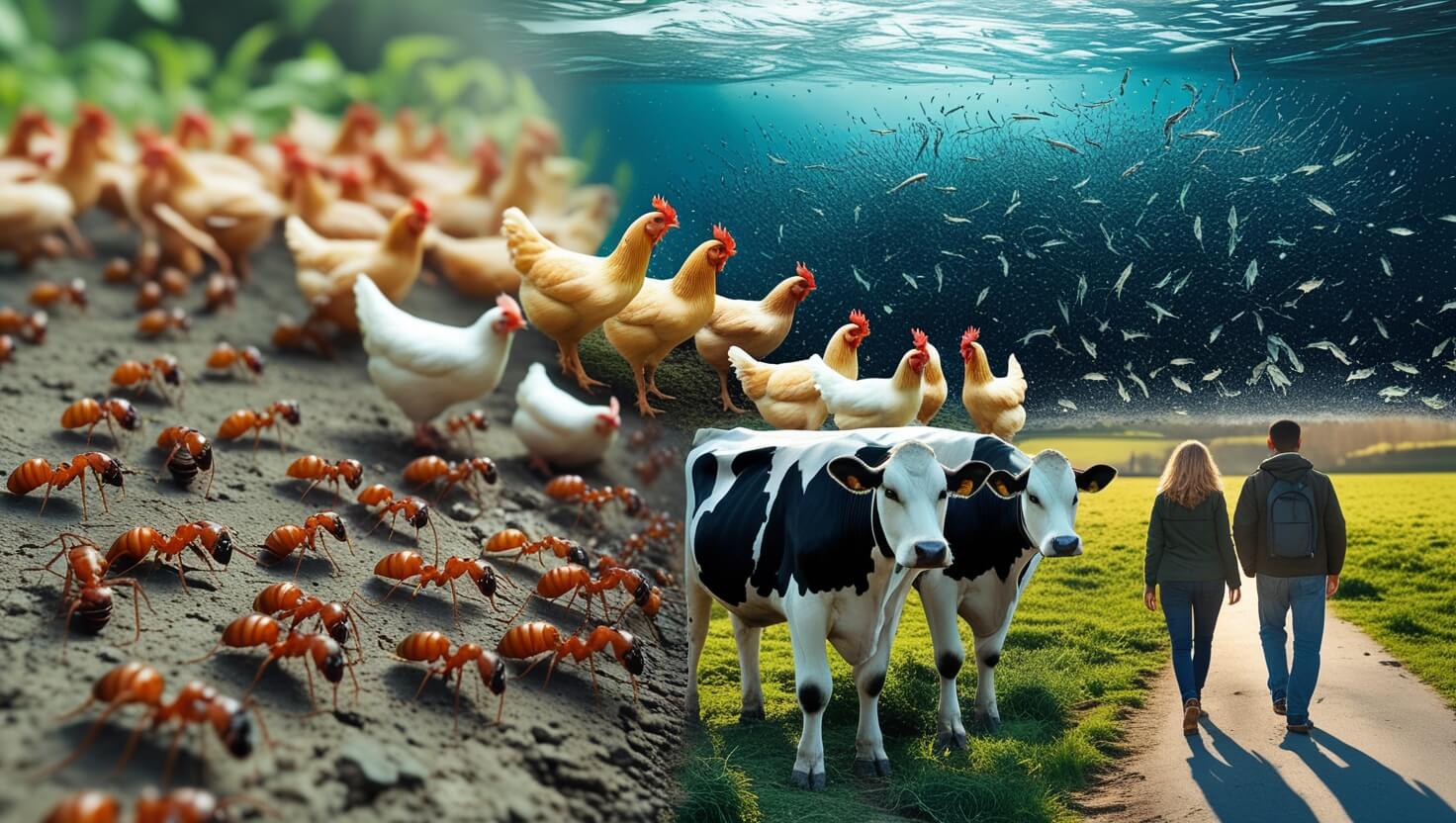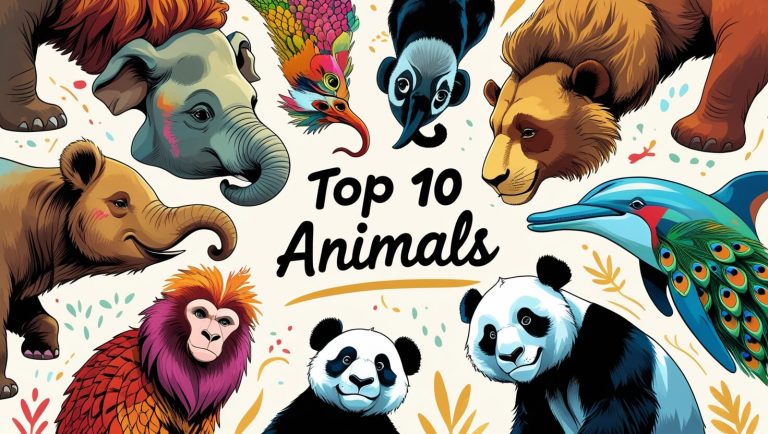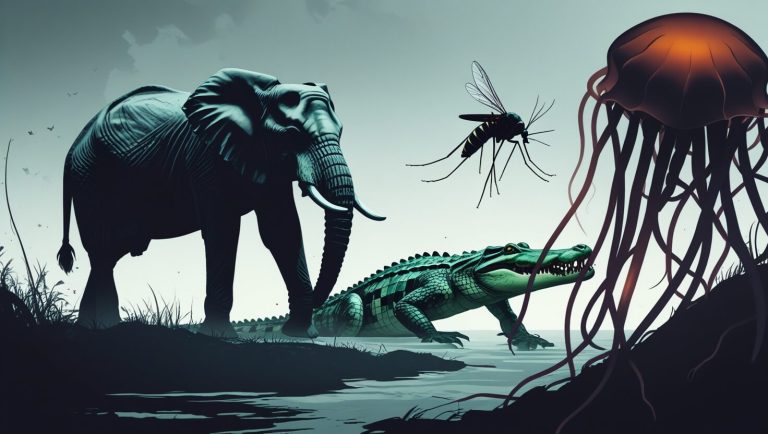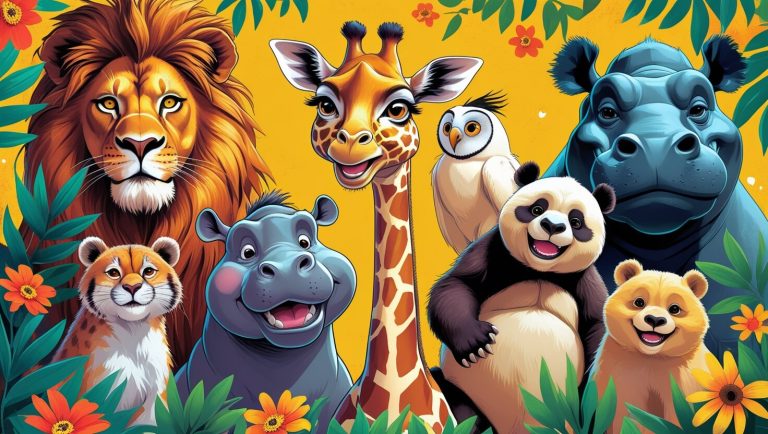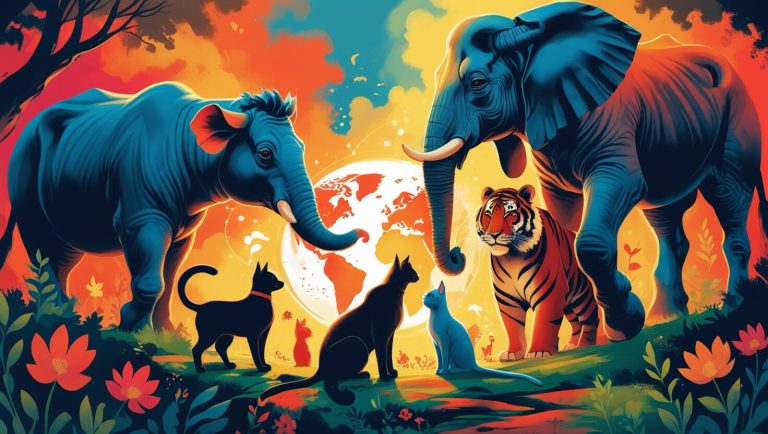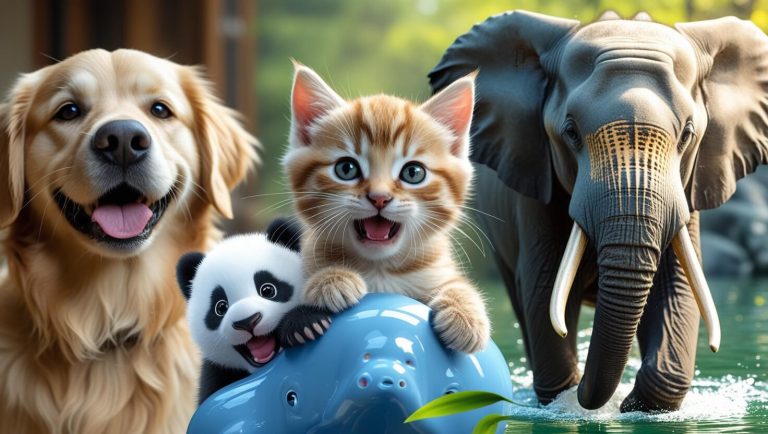Top 10 Animals by Population : The Planet’s Most Populous
Have you ever looked at a bustling city square or a crowded highway and thought, “Wow, that’s a lot of people”? It’s a staggering sight. But if we shift our gaze from the human world to the entire animal kingdom, the numbers become truly mind-boggling.
We often think of large, majestic creatures like elephants, tigers, or whales when we picture wildlife. But the true rulers of our planet, in terms of sheer numbers, are often the smallest, most numerous, and sometimes least-seen species. They are the tiny engineers of our ecosystems, the foundation of food webs, and the true indicators of our planet’s health.
In this article, we will count down the top 10 animals by population on Earth. We’ll explore what makes them so successful, where they live, and the incredible roles they play in our world. Prepare to be amazed by the scale of life that exists all around us, often just outside our field of vision.
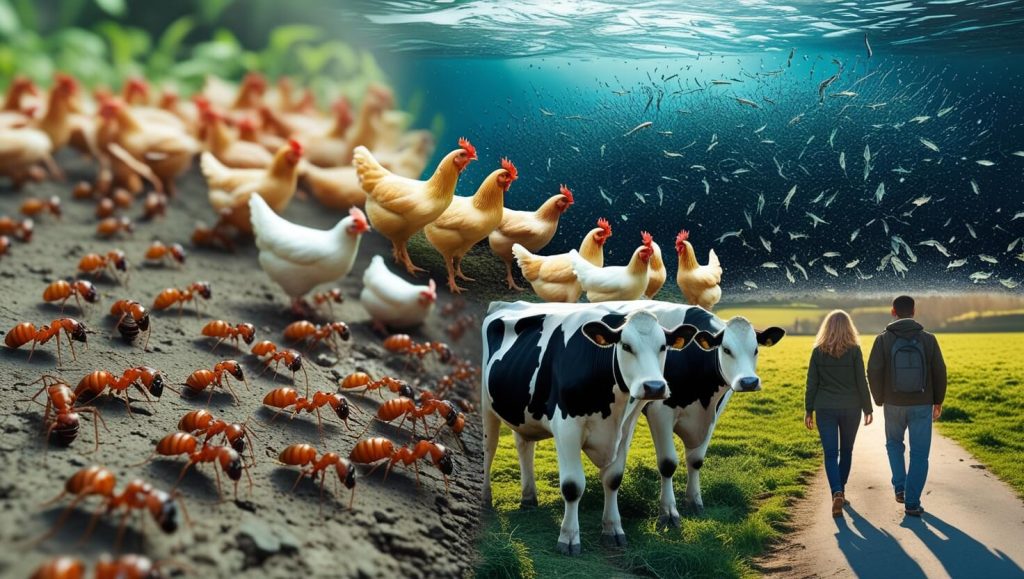
Understanding the “Most Populous”
Before we begin our countdown, it’s important to understand that getting an exact, precise number for any wild animal species is nearly impossible. Scientists use complex methods like sampling, statistical modeling, and satellite imaging to make highly educated estimates. The numbers we will discuss are the best approximations based on current biological and ecological research.
Furthermore, we are focusing on wild animal populations, not animals raised for farming (like chickens or cows), as domesticated populations are artificially maintained by humans and would easily top the list.
Top 10 Animals by Population
Here’s a countdown of the top 10 animals with the largest populations on Earth, based on estimates from scientific studies and observations. These numbers are approximate, as counting every individual in a species is nearly impossible, but they give us a sense of which creatures dominate.
10. Ants
Estimated Global Population: 10 – 20 Quadrillion (10,000,000,000,000,000 – 20,000,000,000,000,000)
It’s only fitting to start our list with a creature whose numbers are so vast they are difficult to comprehend. If you were to count to one quadrillion, counting one number per second, it would take you over 31 million years! There are an estimated 1 to 2 million ants for every single human on Earth.
Ants are the ultimate success story of the insect world. Their power lies in their social structure, or eusociality. They live in highly organized colonies where each ant has a specific role: the queen lays eggs, male ants mate, and sterile female worker ants do everything else—foraging for food, caring for the young, and defending the nest. This incredible cooperation allows them to build massive underground networks, dominate territories, and exploit food resources with amazing efficiency. They are found on every continent except Antarctica and are fundamental to ecosystems as aerators of soil, dispersers of seeds, and recyclers of nutrients.
9. Krill
Estimated Global Population: Several Hundred Trillion to a Quadrillion+
While ants rule the land, krill are the undisputed champions of the ocean in terms of pure numbers. These small, shrimp-like crustaceans swim in massive swarms so dense they can be seen from space. A single swarm can contain over 30,000 individuals per cubic meter of water and stretch for kilometers.
Krill are the linchpin of the entire Antarctic marine ecosystem. They are primary consumers, feeding on microscopic phytoplankton. In turn, they become the primary food source for a vast array of predators, including fish, penguins, seals, and most famously, the gigantic baleen whales. A single blue whale can consume up to 4 tons of krill in one day! This places krill at the very foundation of the oceanic food chain. Their immense population is crucial for the health of our oceans.
8. Termites
Estimated Global Population: Several Hundred Trillion
Often confused with ants, termites are another eusocial insect with a population that stretches into the hundreds of trillions. They are nature’s premier recyclers, equipped with special gut bacteria that allow them to break down tough cellulose found in wood and plant matter. This ability to consume dead and decaying plant material is vital for nutrient cycling in forests and savannas, especially in tropical regions.
Termites are famous for their enormous and complex mounds, which are intricate structures with built-in ventilation and temperature control. While they are a nightmare for homeowners, they are a keystone species in their natural environments. It’s also noteworthy that their digestive process produces significant amounts of methane, making them an important part of the global carbon cycle.
7. Copepods
Estimated Global Population: Billions of Trillions (Quintillions)
If you’ve never heard of a copepod, you’re not alone—but you’ve almost certainly been in water full of them. These tiny crustaceans are the most abundant animals in the world when you consider both numbers and biomass in many aquatic environments. There are an estimated 1.37 × 10¹⁸ copepods in the world’s oceans at any given moment.
These minute creatures are a type of zooplankton and form a critical link between the primary producers (phytoplankton) and larger animals like fish and whales. They are a primary food source for virtually every small fish and larval creature in the sea. Furthermore, their daily vertical migrations—swimming to the surface at night to feed and descending to deeper, darker waters during the day to avoid predators—help transport carbon to the deep ocean, playing a vital role in regulating Earth’s climate.
6. Nematodes
Estimated Global Population: Hundreds of Quintillions
If we are talking about the most numerous animals on Earth by individual count, the title almost certainly goes to the nematode. It is said that if you removed everything else from the planet, the outline of the land, mountains, and cities would still be visible in a ghostly film of nematodes. They are everywhere.
Four out of every five animals on Earth is a nematode. They are found in every biome, from the deepest ocean trenches to the highest mountains, from the hottest deserts to the coldest Antarctic soils. A single cubic meter of productive soil can contain millions of them. The vast majority are microscopic, free-living decomposers that break down organic matter, making them essential for soil health. A smaller percentage are parasitic, affecting plants, animals, and humans.
5. The House Mouse
Estimated Global Population: Several Billion
As the first mammal on our list, the house mouse demonstrates how a species can thrive by adapting to human environments. This small rodent originated in Asia but has now spread to every corner of the globe alongside humans, making it one of the most widespread mammals on the planet.
Their success is due to several factors: they are prolific breeders (a single pair can produce dozens of offspring in a year), they are incredibly adaptable eaters (omnivores that will consume almost anything), and they are experts at living in close proximity to humans (a relationship called commensalism). While often considered a pest, they have been invaluable to science as the primary model organism for medical and genetic research.
4. The Brown Rat
Estimated Global Population: Several Billion
Where there are humans, there are often brown rats (also known as the Norway rat). Like the house mouse, the brown rat is a supremely adaptable commensal rodent that has hitched its wagon to human civilization. Their global population is also estimated to be in the billions.
Rats are renowned for their intelligence, resilience, and cautious nature. They are excellent swimmers and can squeeze through tiny openings, making them difficult to keep out. Their rapid reproduction rate ensures that their populations can rebound quickly. While they are often associated with spreading disease, their success as a species is a testament to their incredible ability to survive and thrive in the environments we create.
3. Humans
Estimated Global Population: ~8.1 Billion
We had to include ourselves on the list. With a population of over 8 billion, humans are by far the most populous large mammal on Earth. Our numbers have grown exponentially due to advancements in agriculture, medicine, and technology, which have reduced mortality rates and increased life expectancy.
However, our dominance is unique. Unlike every other species on this list, our impact on the planet is not just due to our numbers, but to our ability to manipulate our environment on a global scale. This anthropogenic impact—through habitat destruction, pollution, and climate change—is the primary driver of population changes for countless other species, including many on this list.
2. The Domestic Chicken
Estimated Global Population: ~34 Billion
If we include domesticated animals, the numbers skyrocket. The domestic chicken is the most numerous bird on Earth by a colossal margin. There are more than four chickens for every single human. This number is not a result of natural success but a direct consequence of global demand for chicken meat and eggs.
Billions of chickens are raised in industrial farming operations worldwide. Their population is a function of human economics and consumption, not ecological balance. They represent a massive portion of global animal biomass, entirely managed and controlled by human agricultural practices.
1. The Arctic Woollybear Moth Larvae
Estimated Individual Count: Uncountably High (Per Species Basis)
Honorable Mention: The Springtail (Collembola)
Estimated Global Population: Quintillions
This final spot is tricky. By individual species, the most populous insect or nematode species would likely win. One fascinating contender is the Arctic Woollybear Moth caterpillar. In its specific tundra habitat, its population density can be incredibly high, with thousands of individuals per acre, representing a massive biomass for such a harsh environment.
However, for the true #1 spot in terms of individual count, we must return to the microscopic world. Springtails are tiny, soil-dwelling hexapods often mistaken for insects. They are found in absolutely staggering numbers worldwide—in soil, leaf litter, and decaying wood. It is estimated that there are approximately 100,000 springtails for every square meter of land on Earth.
When you do that math across the entire planet, the number reaches an almost unimaginable scale—easily into the quintillions (10^18). They are among the most abundant and successful animals of all time, playing a critical role in breaking down organic matter and cycling nutrients in nearly every terrestrial ecosystem on the planet.
Factors Influencing Animal Populations
Several factors contribute to the massive populations of these animals:
- High Reproduction Rates: Many of these species, like ants and krill, reproduce quickly, producing thousands or millions of offspring in a single generation.
- Adaptability: These animals thrive in diverse environments, from oceans to soils, allowing them to colonize vast areas.
- Lack of Predators: Some species, like copepods and nematodes, face fewer natural predators due to their small size or habitat.
- Social Behavior: Insects like ants and termites benefit from cooperative colony structures, which enhance survival and reproduction.
- Ecological Roles: Many of these animals are key players in their ecosystems, ensuring their survival through interconnected food webs.
Why These Populations Matter
The abundance of these animals highlights the interconnectedness of life on Earth. For example:
- Ecosystem Balance: Krill and copepods support marine food chains, while earthworms and nematodes enhance soil health.
- Biodiversity: High populations of these species contribute to the diversity of life, ensuring ecosystems remain resilient.
- Human Impact: Some species, like sardines and earthworms, directly benefit humans through fisheries and agriculture.
However, human activities like deforestation, pollution, and overfishing can threaten even the most abundant species. Protecting these populations is crucial for maintaining global ecosystems.
Questions and Answers (Q&A)
u003cstrongu003eWhy are insects and tiny animals so much more populous than larger animals?u003c/strongu003e
This is due to a fundamental ecological rule. Smaller animals require far less energy and resources to survive and reproduce. A single tree can provide food and shelter for thousands of insects, but it might only support one or two larger animals. Smaller size also allows for much faster reproduction rates, enabling their populations to grow and adapt quickly.
u003cstrongu003eAre these huge populations a good thing?u003c/strongu003e
It depends on the context. For keystone species like krill and copepods, their massive populations are vital for a healthy ecosystem. However, for species like rats and mice, their high numbers in urban areas are often considered a problem because they can spread disease and damage property. The population itself is less important than its balance with the surrounding environment.
u003cstrongu003eHow does climate change affect these animal populations?u003c/strongu003e
The effects are mixed but significant. For species like krill in the Antarctic, warming oceans and loss of sea ice (which supports their food source, phytoplankton) threaten their numbers, which would collapse the entire food web. For some insects, warmer temperatures might allow them to expand their ranges and breed more often, potentially increasing their populations in certain areas.
u003cstrongu003eWhat is the difference between u0022populationu0022 and u0022biomassu0022?u003c/strongu003e
Population refers to the number of individual animals. Biomass refers to the total mass of all those individuals. For example, while there are quintillions of nematodes, each one is microscopic, so their total biomass is less than the biomass of all humans on Earth, even though there are far fewer of us.
u003cstrongu003eWhich animal has the smallest population on Earth?u003c/strongu003e
This is usually a title held by species on the very brink of extinction. Examples include the vaquita (a porpoise with an estimated 10 individuals left), the Javan rhino, or certain species of frogs and birds that may only have a few dozen surviving members.
u003cstrongu003eDo viruses and bacteria count as animals?u003c/strongu003e
u003cbru003eNo, they do not. Viruses are not considered living organisms by many definitions, and bacteria are prokaryotes, a completely separate kingdom of life from animals (which are eukaryotes). This list only covers members of the animal kingdom.
u003cstrongu003eHow can we estimate the population of animals we can’t even see?u003c/strongu003e
Scientists use clever methods. For soil nematodes or springtails, they take a small, known sample of soil (like a core), extract all the individuals from it, count them, and then multiply that number by the total area they want to estimate. It’s not perfect, but it gives a very good scientific approximation of the true number
Conclusion:
The top 10 animals by population showcase the incredible diversity and resilience of life on Earth. From the trillions of ants marching in colonies to the quintillions of copepods swimming in the oceans, these creatures play vital roles in maintaining ecological balance. Their massive numbers are a testament to their adaptability, reproductive success, and importance in ecosystems.
By understanding and protecting these abundant species, we can ensure the health of our planet’s ecosystems for future generations. Whether it’s supporting marine life through sustainable practices or preserving soil health for agriculture, every action counts.
judi bola situs toto link slot situs toto link slot link slot monperatoto

Rony Junior is a lifelong animal lover who’s happiest with muddy paws on the couch and fur on their clothes. From curious cats to loyal dogs and everything in between, they write about the joy, challenges, and quirks of living alongside animals. When not blogging, you can find them at the local shelter, giving belly rubs and making new four-legged friends.

